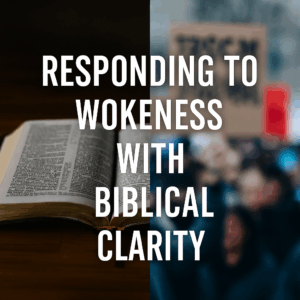⏱️ Estimated Reading Time: 4 min read
 In Mark 8:29, Jesus asks the apostles a simple question: “Who do you say that I am?” How we interpret this question is of critical importance. For many, “Who do you say that I am?” indicates that our epistemology (study of knowledge) should inform our theology. But what if this is backwards? What if, instead, our theology should inform our epistemology? This is the foundation on which Daniel Darling builds his entire book, The Original Jesus. “I want to peel away the faux Jesus we’ve constructed and expose the real Jesus,” Darling comments (15). In the book, Darling outlines ten popular “faux Jesus” constructions and knocks down these myths with a Christology centered in Scripture. Here are the 10 Jesus figures Darling seeks to disprove:
In Mark 8:29, Jesus asks the apostles a simple question: “Who do you say that I am?” How we interpret this question is of critical importance. For many, “Who do you say that I am?” indicates that our epistemology (study of knowledge) should inform our theology. But what if this is backwards? What if, instead, our theology should inform our epistemology? This is the foundation on which Daniel Darling builds his entire book, The Original Jesus. “I want to peel away the faux Jesus we’ve constructed and expose the real Jesus,” Darling comments (15). In the book, Darling outlines ten popular “faux Jesus” constructions and knocks down these myths with a Christology centered in Scripture. Here are the 10 Jesus figures Darling seeks to disprove:
- Guru Jesus
- Red-Letter Jesus
- Braveheart Jesus
- American Jesus
- Left-Wing Jesus
- Dr. Phil Jesus
- Prosperity Jesus
- Post-Church Jesus
- BFF Jesus
- Legalist Jesus
The structure of the book is very straightforward, easy to read, and clear for understanding and application. This is a book that is written for the new believer and the veteran deacon alike. Usually Darling will provide an opening anecdote, explain the given misconception being addressed in the chapter, draw out the reason this “faux Jesus” doesn’t work, and then proposes an alternative approach to how we view Jesus.
For example, in chapter 6 talks about “Dr. Phil Jesus.” He talks about our drift away from “creation, fall, redemption” and a drift instead towards blueprints and five-step plans for finding Jesus. Darling begins the conversation by talking about how we read Scripture. Although it contains principles and wisdom, it is primarily a book telling a story. The Bible cannot be read as a five-step plan, but must be seen as a massive narrative of God’s redemptive plan for the universe. Drawing on the magnitude of Jesus’s encounter with Nicodemus in John 3, Darling emphasizes this crucial point:
Nicodemus could apply principle after principle–even principles found in the pages of Scripture–and still be no closer to the kingdom of God. What separates genuine Christianity from every other attempt at reaching God is that it aims not for the self-improvement of sinners but the resurrection of sinners to new life. This is not just a distinctive feature; it’s a whole new paradigm (98).
Darling then proposes an alternative solution. “We don’t need to be patched up, tweaked, or improved, but we need to be transformed, resurrected, and redeemed” (105). This is a great example of how Darling outlines his arguments, and one of the highlight chapters of the book, as it is arguably one of the biggest misconceptions about Jesus we face in and out of the Church today.
Another chapter I really enjoyed in Chapter 8, “Post-Church Jesus.” In our society, especially in my millennial generation, there is a tendency to view church as irrelevant and unnecessary. With technology that puts us in Matt Chandler’s pews from the couch, why bother waking up early on Sunday mornings? And after all, didn’t Jesus spend more time doing ministry outside of a building? Some pastors have even overcompensated this “Sunday is not the goal” idea to the point that the true feeling has become that “Sunday does not matter.” Darling is quick and right to explain the flaws with this mindset, and does a great job of demonstrating the importance of a high ecclesiology. I especially liked how he framed it in terms of how church serves as “a declaration of war against the demonic powers” (128). This is a chapter you can’t miss.
The Original Jesus is concerned with determining who the Savior is. We want to mold our Play-Doh Jesus into our context, but this is not what Jesus was inviting us to when he asks, “Who do you say that I am?” He is instead calling us to carefully think upon His person and work, and to draw us into worship. Daniel Darling’s book helps us do both of these things. I recommend this as a resource to aid us in breaking down the common Jesus myths we encounter in an attempt to uphold the true, unquestionable Son of Man.
I received this book for free from Baker Books for this review. I was not required to write a positive review. The opinions I have expressed are my own. I am disclosing this in accordance with the Federal Trade Commission’s 16 CFR, Part 255: “Guides Concerning the Use of Endorsements and Testimonials in Advertising.”


